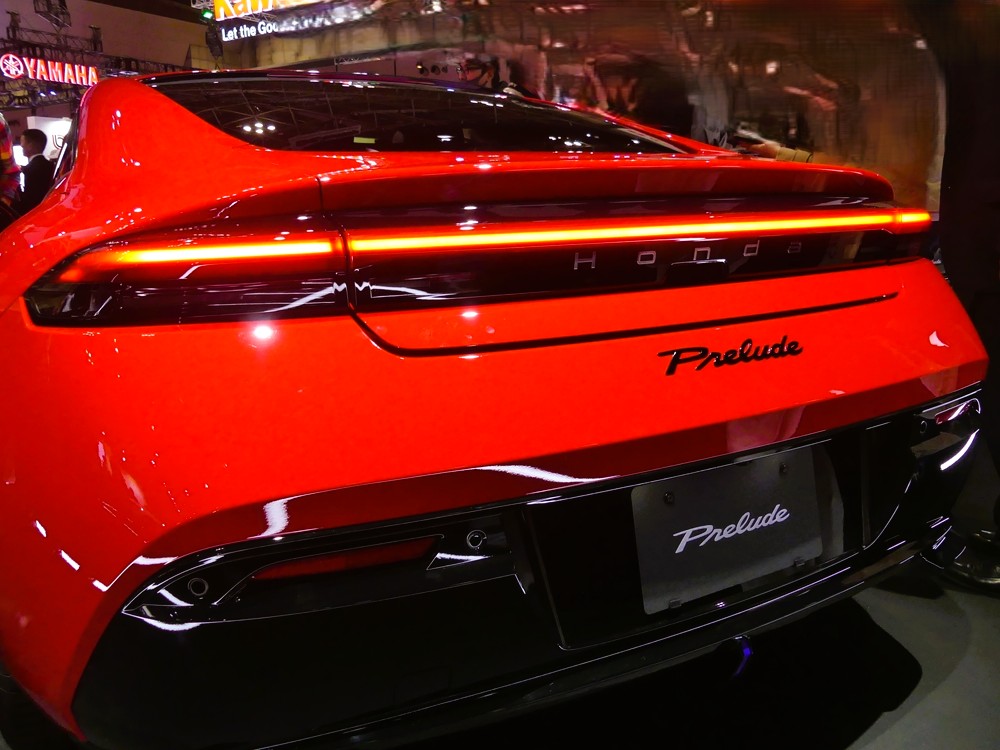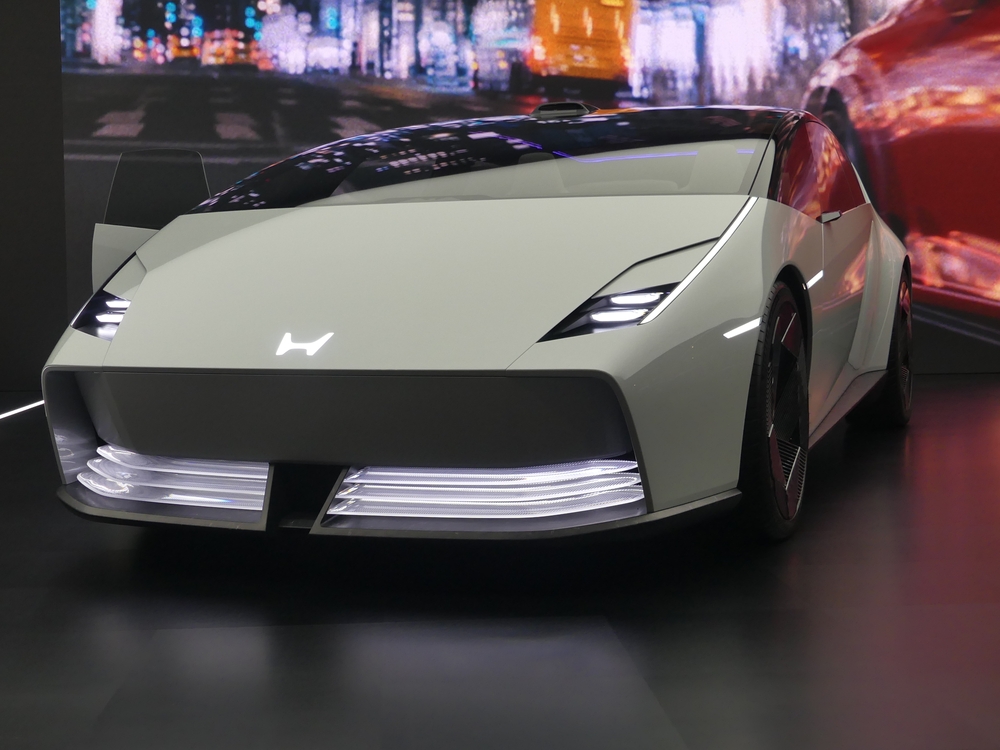At the Japan Mobility Show 2025, taken place in Tokyo from 30th October until 9th November (https://www.japan-mobility-show.com/en/), Japan’s leading automakers – Toyota, Honda, Nissan, and others – showcased not only futuristic models but also their CEOs shared their personal favorite cars.
The executive spoke with deep affection, reminding audiences that driving is more than transportation — it’s emotion, craft, and identity.
Yet, as these leaders express their passion, Japan’s younger generation is drifting away from car ownership.
This contrast reveals how Japan’s car culture is changing in the age of convenience, urban living, and digital connection.
🚘 🚘 🚘 The CEOs’ “Oshi Kuruma” — The Cars They Truly Love
Toyota | Koji Sato and the 1988 MR2 — “Charming Because It’s Fussy”
Toyota CEO Koji Sato drives a 1988 MR2, a mid-engine classic he personally maintains with care.
Despite lacking air conditioning, he still takes it out during Japan’s hottest months, joking, “The driver overheats before the car does.”
Launched in 1984, the MR2 was Japan’s first mass-produced mid-engine sports car. Though its successors ended production in 2007, Toyota revived the spirit in 2025 with new endurance-race cars featuring the same mid-ship layout.
Sato’s devotion to this 40-year-old machine embodies Toyota’s craftsmanship, engineering pride, and nostalgia that continue to shape its philosophy.
At the same event, Toyota unveiled the IMV Origin, a modular pickup concept making its world premiere at the Japan Mobility Show 2025.
Unlike ordinary production models, the IMV Origin is shipped in a “semi-complete” state so that users can assemble and customize it themselves.
Designed with emerging markets such as Africa in mind, Toyota provides the foundation while the upper body is built locally to suit regional needs — whether for carrying people, goods, or equipment.
It represents Toyota’s vision of co-creation: empowering users to finish the vehicle according to their own lifestyle and purpose.
Honda | Toshihiro Mibe and the Prelude — The Ultimate Date Car Returns
Honda CEO Toshihiro Mibe recently bought the new Prelude, a compact sports coupe released in September.
The modern hybrid version revives the 1980s icon once known as “the ultimate date car.”
“When I was young, I admired the Prelude but couldn’t afford it,” he said with a laugh. “So I decided to bring it back myself.”
He adds with conviction, “Even in the age of autonomous vehicles, the joy of driving will never fade.”
The new Prelude captures Honda’s timeless belief that technology should enhance, not replace, the emotional bond between people and cars.

Nissan | Ivan Espinosa and the Fairlady Z — Driving for Refreshment
Nissan CEO Ivan Espinosa chose his personally imported, left-hand-drive Fairlady Z as his favorite.
He calls his morning drives “refreshing moments.”
Since debuting in 1969, the Z series has symbolized “an affordable sports car” that balances performance and accessibility.
The current generation, launched in 2022, carries that legacy forward — and has just entered the Chinese market for the first time.
On October 29, Nissan also unveiled the all-new Elgrand, its first full redesign in 16 years.
Once a leader in Japan’s minivan market, the new Elgrand features Nissan’s e-Power hybrid system for smooth acceleration and advanced all-wheel-drive control for improved cornering.
With sluggish sales caused by production shortages, Nissan aims to use this model to regain momentum.
On November 6, the company announced it would sell its Yokohama headquarters building for ¥97 billion, while continuing to lease and operate it.
The sale is intended to secure funds for restructuring and to support a renewed product offensive centered on the new Elgrand.
Suzuki | Toshihiro Suzuki and the First-Generation Alto — Nostalgia in Compact Form
Suzuki CEO Toshihiro Suzuki presented the 1979 Alto, Japan’s beloved kei car, as “the first four-wheeled vehicle I ever drove.”
His late father, Osamu Suzuki, helped establish the kei-car culture that defines Japan’s streets today.
“I remember how small it was — my shoulder touched the passenger’s, and my heart raced,” he recalled.
It’s a nostalgic memory that perfectly captures the warm, human side of Japan’s compact-car tradition.
At the same show, Suzuki unveiled its first electric kei car (EV) — a milestone for a segment that makes up about 40 percent of Japan’s new-car market.
As global EV price competition intensifies, from BYD in China to low-cost imports in Europe, Suzuki’s entry signals that Japan is ready to join the race on its own terms.
Isuzu & Yamaha — Celebrating Japan’s Broader Motoring Spirit
Masanori Katayama, Chairman of the Japan Automobile Manufacturers Association and head of Isuzu Motors, showcased the Travio — a camping vehicle that can be driven with a standard license.
Meanwhile, Gen Tsuneyoshi Shitara, President of Yamaha Motor, presented two of his personal favorites: the classic RZ250 and the modern XSR900, representing Japan’s enduring passion for two-wheeled performance.
Isuzu & Yamaha — Celebrating Japan’s Broader Motoring Spirit
Masanori Katayama, Chairman of the Japan Automobile Manufacturers Association and head of Isuzu Motors, showcased the Travio — a camping vehicle that can be driven with a standard license.
Meanwhile, Gen Tsuneyoshi Shitara, President of Yamaha Motor, presented two of his personal favorites: the classic RZ250 and the modern XSR900, representing Japan’s enduring passion for two-wheeled performance.

Changing Car Cluture in Japan
💬 Passion vs Reality — The Reason Behind the Event
The Japan Automobile Manufacturers Association (JAMA) organized this “CEO Favorite Car” event to reignite public interest amid a shrinking market.
In 2024, new-car sales fell 7 percent to 4.42 million units — 20 percent less than a decade ago.
Population decline, urbanization, and changing lifestyles are reshaping Japan’s relationship with cars.
🏙️ City Life: “Use It, Don’t Own It”
In big cities like Tokyo and Osaka, public transport, car-sharing, and electric scooters make car ownership optional.
With high parking and insurance costs, many 20-somethings find it practical to rent instead of own.
Driver’s-license holders in their 20s have fallen by nearly a million in 10 years.
Social life has also gone online — so the classic drive date no longer defines youth culture.
Even though automakers like Toyota’s KINTO offer subscription models, the emotional pull of owning a car has weakened.
🚙 Rural Reality: Cars as a Lifeline
Outside the cities, the story flips.
Public transport is limited, and cars remain essential for work, shopping, and social life.
Young drivers still view vehicles as status symbols — large minivans like the Alphard or SUVs like the Harrier are especially popular.
Ownership is achieved through used-car markets or credit plans, showing that the car is still both necessary and desirable in rural Japan.
💰 Beyond “Car Apathy”: An Economic and Cultural Shift
Japan’s so-called car detachment isn’t just about lost interest.
It reflects economics — stagnant wages versus rising car prices — and a cultural pivot from “owning things” to “enjoying experiences.”
Automakers now emphasize mobility as a service, flexible subscriptions, and emotionally engaging experiences instead of pure ownership.
⚙️ Redefining “Driving Joy”
The CEOs’ nostalgic affection symbolizes the roots of Japan’s car love.
But today’s youth value stories, community, and authenticity more than horsepower.
Bridging these two mindsets — passion and practicality — will define the next chapter of Japan’s auto culture.
🏁 Looking Ahead: A New Car Culture for the Next Generation
The Japan Mobility Show 2025 revealed two faces of Japan’s automotive world:
the heartfelt devotion of industry veterans and the rational minimalism of digital-era youth.
For manufacturers, the challenge is clear: create cars that connect emotionally, not just mechanically.
By blending innovation with storytelling and community, Japan can once again turn mobility into a source of joy.
🅿️ Bonus Insight: Why Japanese Drivers Park Backwards
A small yet fascinating part of Japanese car culture is its parking etiquette.
Most drivers in Japan reverse into parking spaces — and there’s good reason for it.
1️⃣ Space Efficiency
Urban parking lots are tiny. Backing in requires less maneuvering and helps maximize limited space.
2️⃣ Safety & Visibility
Leaving a spot facing forward lets drivers see pedestrians and oncoming cars clearly, reducing accidents and fender benders.
3️⃣ Cultural Mindset of Courtesy
Japanese society values order and consideration. Parking backwards keeps traffic flow smooth and shows respect for others.
🌏 A Cultural Contrast
In the U.S. and Europe, front-in parking is common because spaces are larger.
Japan’s tight layouts and social discipline gave birth to its distinctive “back-in parking” norm — a unique blend of practicality and politeness.
🚘 Traveler Tip
Renting a car in Japan? Try backing into your spot — you’ll fit right in!
It’s a simple gesture that reflects the subtle beauty of Japan’s driving culture.

